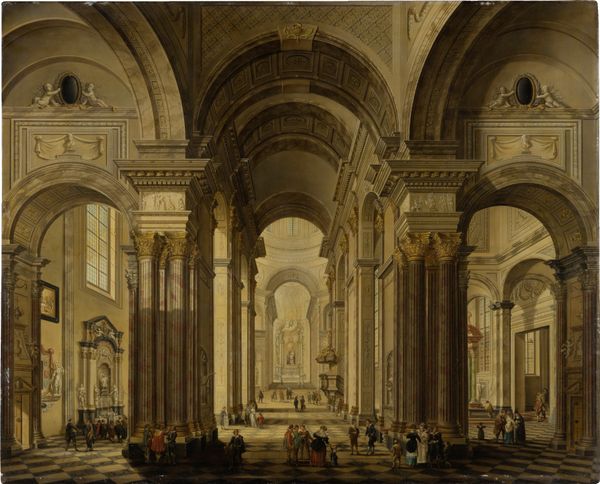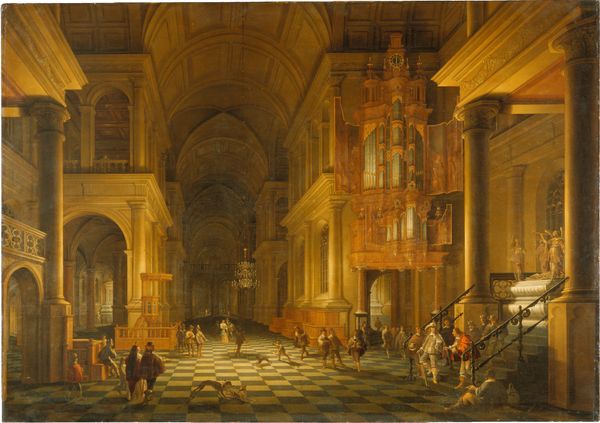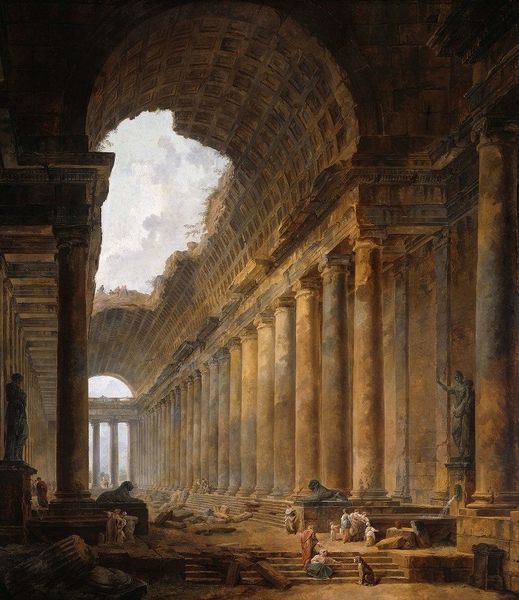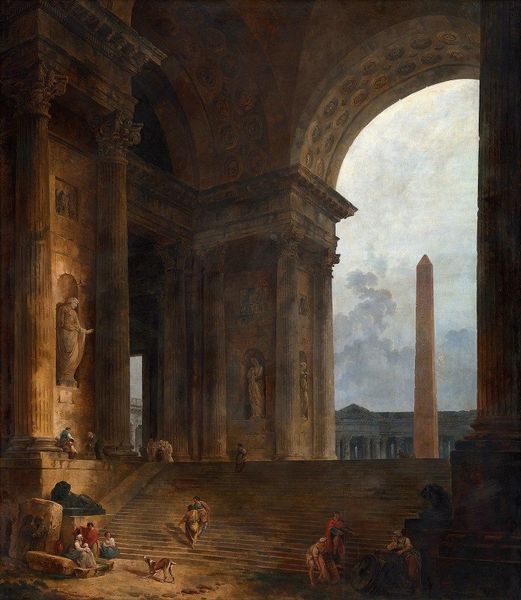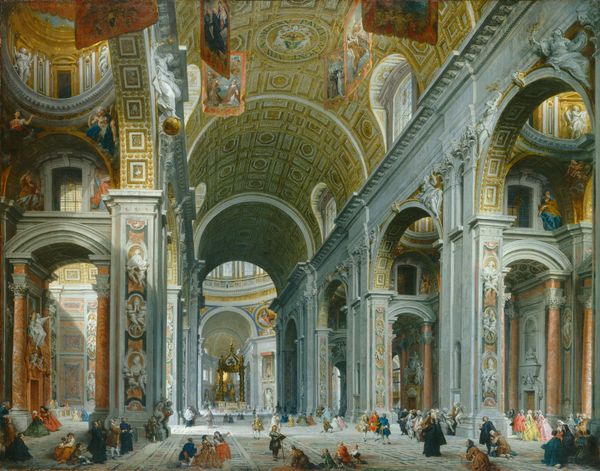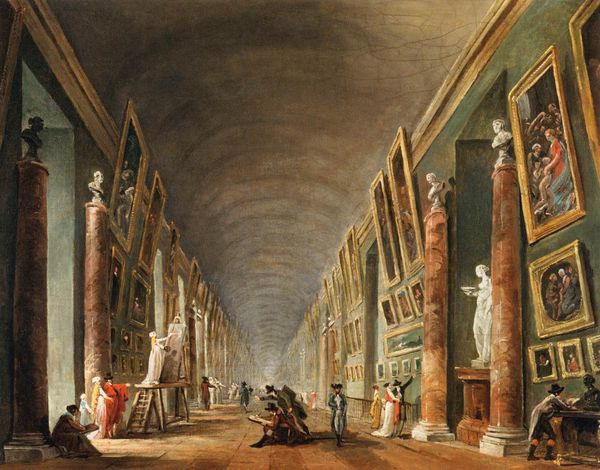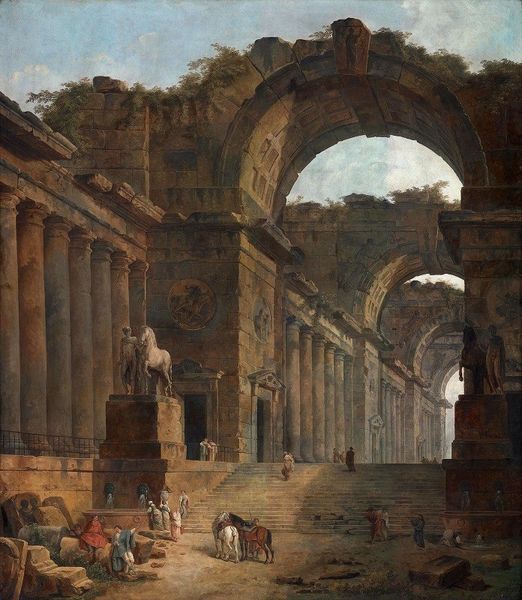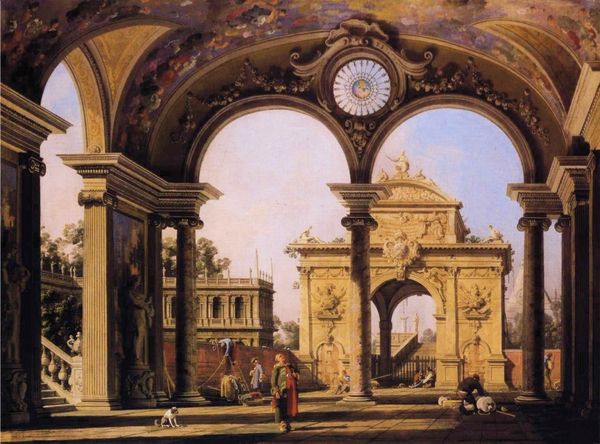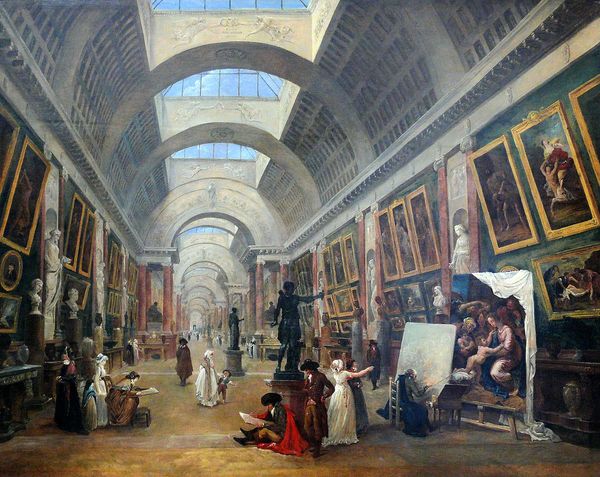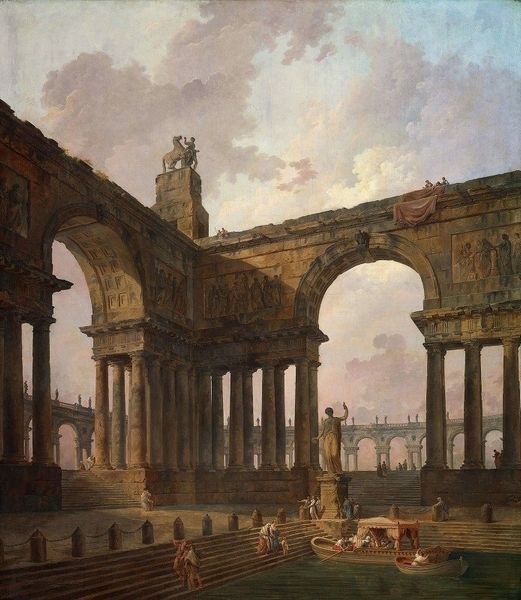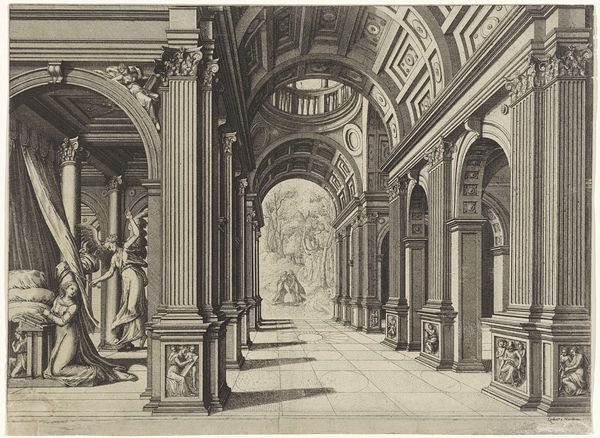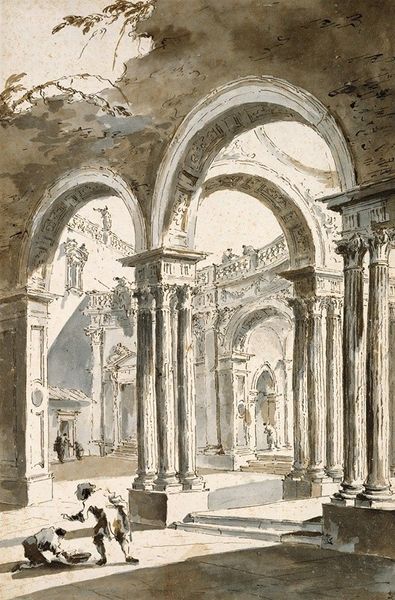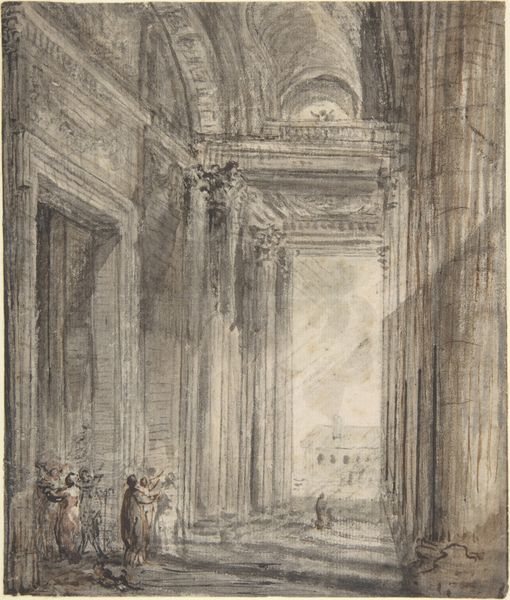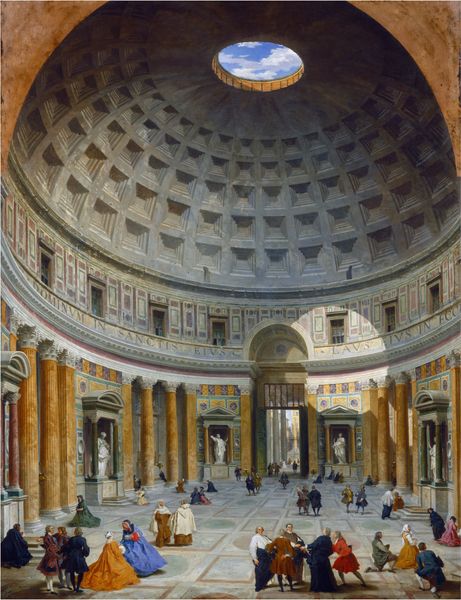
painting, oil-paint
#
public art
#
neoclacissism
#
painting
#
oil-paint
#
landscape
#
history-painting
#
historical building
Copyright: Public Domain: Artvee
Curator: We’re looking at Louis Léopold Boilly's “Vue Intérieure Du Panthéon,” painted in 1810, rendered in oil on canvas. Editor: It's imposing, almost severe. The muted gold tones lend the vast interior a feeling of stifling grandeur. Curator: Boilly’s mastery is evident in the geometric precision he employs. Observe how the checkerboard floor recedes into the distance, guiding the eye towards the apse and culminating in the intricate dome, perfectly centered. Editor: But this perfect centering obscures a more complex story. The Pantheon itself, originally a church, then a secular temple dedicated to the French Revolution, and back to a church— this architectural instability echoes the turmoil of post-revolutionary France. Do you see how Boilly minimizes the human presence? Curator: Indeed, the figures are dwarfed by the architecture, which allows us to focus on the spatial relationships and the interplay of light and shadow, a fundamental element in neoclassical painting. The eye travels effortlessly from the brightly lit dome down through the increasingly dark lower sections of the structure. Editor: And aren’t those carefully positioned groups of figures telling a story? Consider their clothing. They hint at the lingering class divisions, even in this space supposedly dedicated to republican ideals. Their arrangement almost seems staged, which diminishes any notion of the collective. The Pantheon was not intended to unite, but to be looked at, not dwelled within. Curator: I find Boilly is showing us something about the ideals of the age. Notice how the rational arrangement of space reflects the enlightenment’s desire for order. Even in its apparent immensity, it adheres to classical proportions and ideals. Editor: Perhaps. However, what resonates with me is not order, but the chilling austerity. Despite its intended function, its very grandeur excludes intimacy. We should question which figures of authority defined these aesthetics. Curator: Interesting to consider such political dynamics within the architectural portrait. Editor: Definitely leaves one reflecting upon legacies and power.
Comments
No comments
Be the first to comment and join the conversation on the ultimate creative platform.
